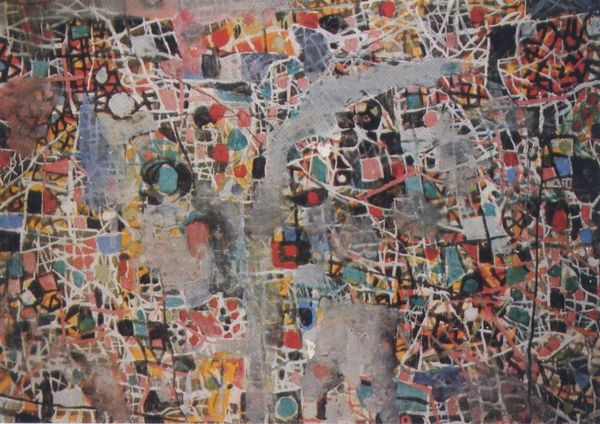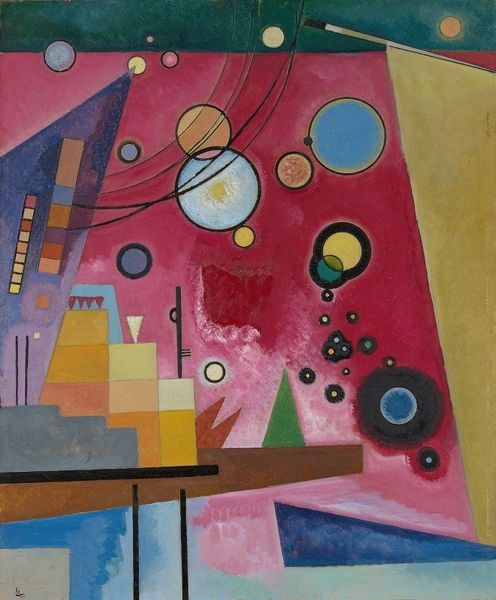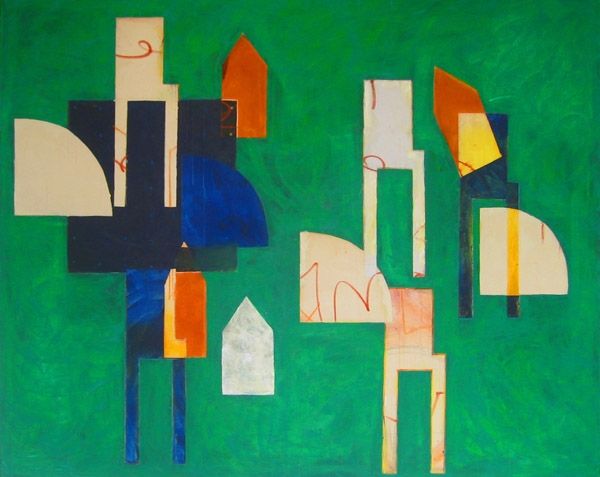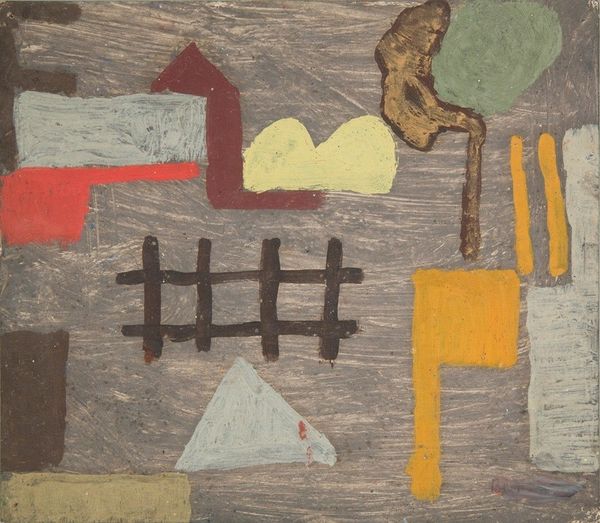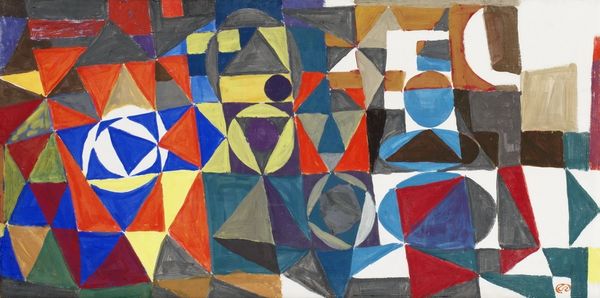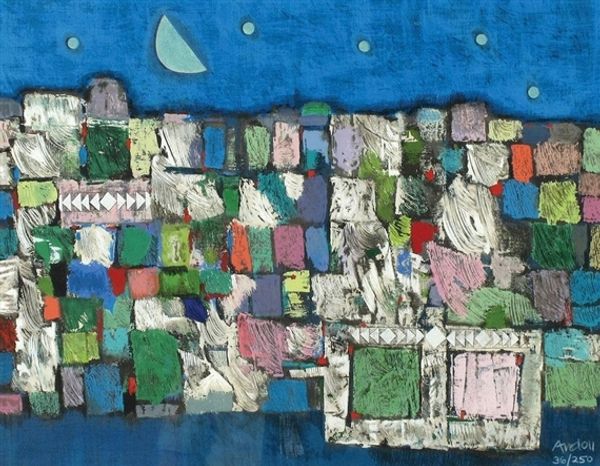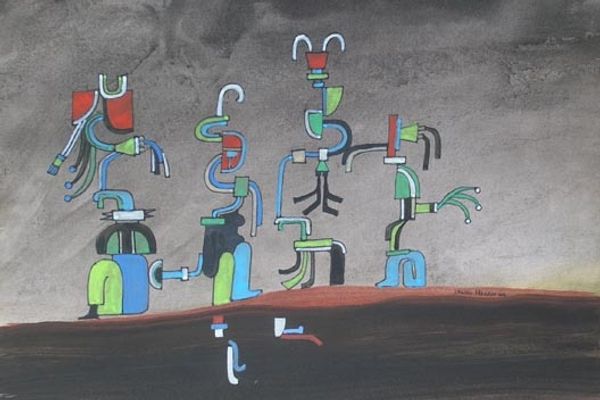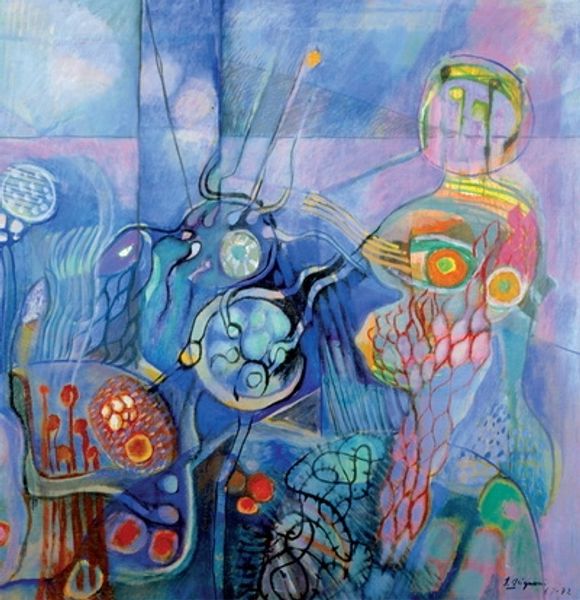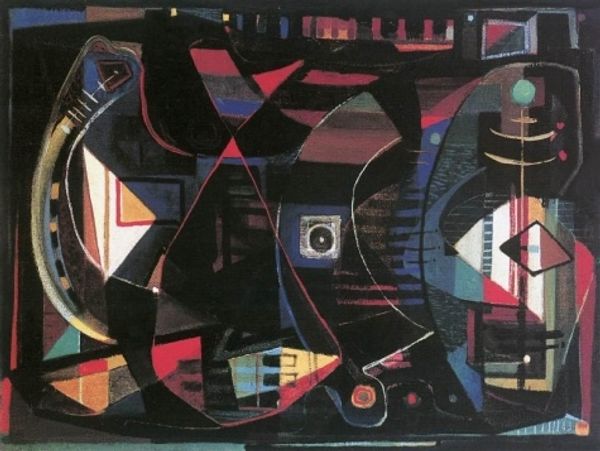
Dimensions: 100 x 100 cm
Copyright: @Anima Ehtiat
Editor: Anima Ehtiat’s 2019 acrylic painting, "The Sound and the Fury," presents a compelling composition. It’s got this almost childlike simplicity, yet it evokes a strange, unsettling feeling. What strikes me most is the repetition of these geometric shapes. What do you see in this piece? Curator: I see a community, or perhaps two, in visual conversation. The upper blue field seems to contain figures more airy, less grounded. Below, a redder, earthier plane holds similar figures but with a different posture. Consider the emotional weight of color: blue often signifies the ethereal, the spiritual, while red can symbolize passion, the earthly, or even conflict. Notice the consistent, yet minimal eyes— are they watching? Are they judging? The shapes themselves seem derived from ancient alphabets or perhaps mystical diagrams, and it reminds us of cultural memory embedded within the image itself. What feelings does this piece invoke for you? Editor: That's fascinating. I initially thought the eyes added to the unsettling feeling, like they were observing. But you're right, it could also be about communication between different realms or states of being. It seems almost like these symbols could be decoded if we knew the key, like a visual language from a dream. Curator: Precisely! Each symbol carries layered meanings accumulated over time. The artist may not consciously intend all interpretations, but the subconscious resonates. And, like dream analysis, different cultures will interpret visual symbols differently. The persistent use of triangles and circles in these forms could represent trinities, cycles, or even protective shields, all steeped in a rich history of visual symbolism. What do you take away from that? Editor: It makes me realize how much is packed into abstract work, even if it appears simple. It really encourages a deeper engagement and challenges our interpretations of familiar shapes. Curator: Yes, art like this serves as a visual mirror, reflecting our own internalized cultural and emotional landscape. The painting then becomes not just an object, but a conduit for collective memory.
Comments
No comments
Be the first to comment and join the conversation on the ultimate creative platform.



